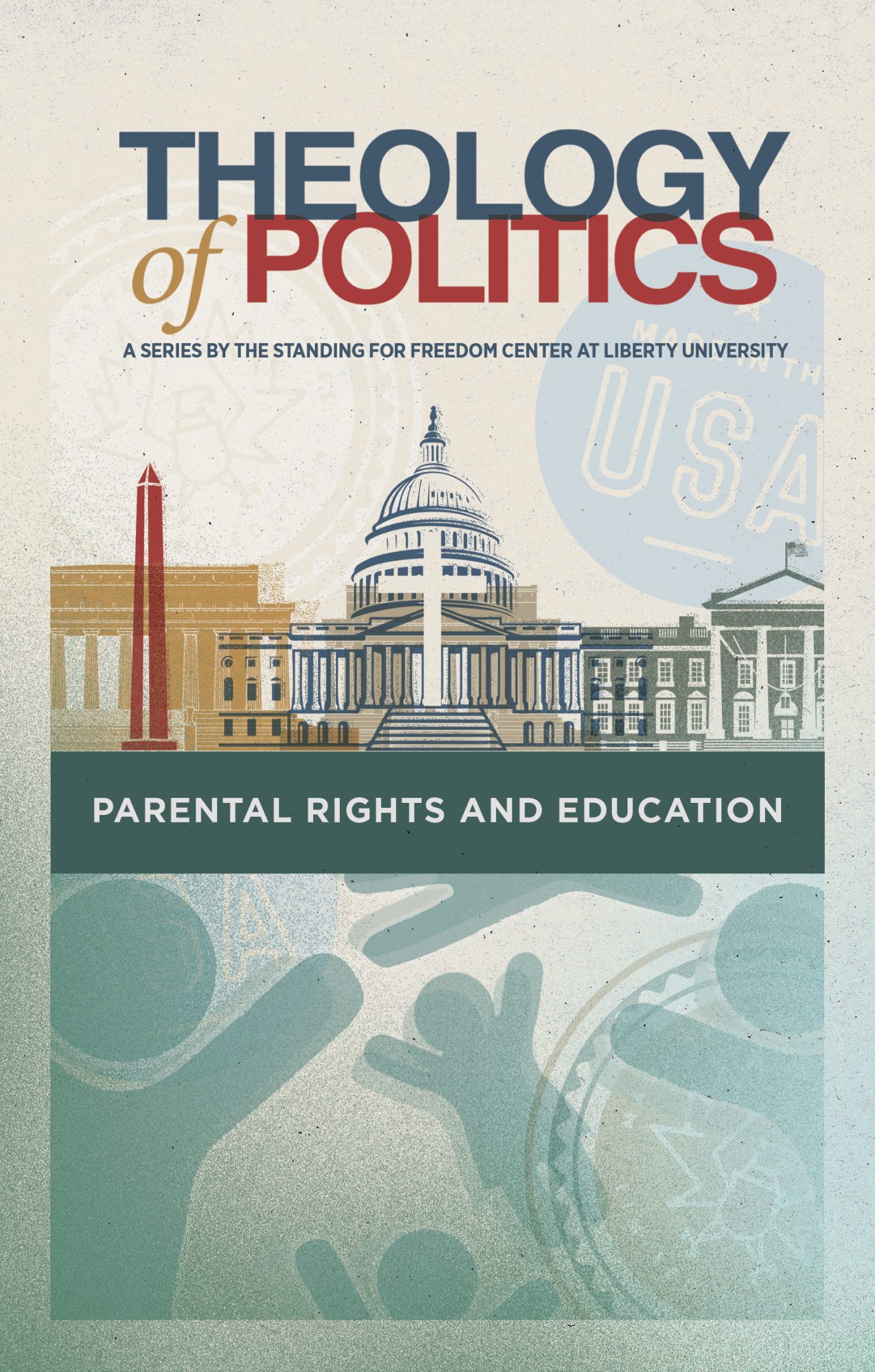


Get a free copy of Parental Rights & Education when you subscribe to our newsletter!

The precedent of requiring judges to defer to federal agencies on their interpretation of ambiguous legislative text only served to embolden unelected bureaucrats to interpret unambiguous text and even to rewrite entire laws to advance their own agenda.
On Friday the Supreme Court overturned Chevron v. National Resources Defense Council, a 40-year-old case.
What does that mean for America?
Chevron was decided in 1984 by a 6-0 decision of the Supreme Court, ruling that if a law was ambiguous about an issue, courts should grant deference to an agency’s interpretation of that statute. This became known as “Chevron deference.”
Ironically, the Court at that time ruled against environmental groups and in favor of the Reagan administration, which at the time was attempting to deregulate.
However, the ruling soon became a bludgeon for agencies to impose their own interpretations of laws, allowing them to promulgate rules and mandates that were either never part of Congress’s intent or that far exceeded the scope of the law.
Late last week, the Court delivered its ruling in Loper Bright Enterprises v. Raimondo, a case that was consolidated with another similar case called Relentless Inc. v. Department of Commerce. The cases involved individuals in the fishing industry who were required under a rule promulgated by the National Marine Fisheries Service to have government observers on their boats each time they went out to sea, all at the fishermen’s expense.
It cost the fishermen approximately $700 a day.
Lower courts had upheld the rule, citing the Chevron precedent and siding with the government.
But the Supreme Court ruled for the fishermen and dealt the final blow to Chevron.
The 6-3 ruling was authored by Chief Justice John Roberts.
The Court found that the Chevron ruling violates the Administrative Procedures Act (APA), which was passed in 1946 “as a check upon administrators whose zeal might otherwise have carried them to excesses not contemplated in legislation creating their offices.”
Roberts wrote,
“The APA prescribes procedures for agency action and delineates the basic contours of judicial review of such action. And it codifies for agency cases the unremarkable, yet elemental proposition reflected by judicial practice dating back to Marbury: that courts decide legal questions by applying their own judgment. As relevant here, the APA specifies that courts, not agencies, will decide ‘all relevant questions of law’ arising on review of agency action, (emphasis added)—even those involving ambiguous laws.”
A key aspect of the ruling was that since the founding of the nation, courts have been responsible for interpreting laws.
Roberts further explained,
“Perhaps most fundamentally, Chevron’s presumption is misguided because agencies have no special competence in resolving statutory ambiguities. Courts do. The Framers anticipated that courts would often confront statutory ambiguities and expected that courts would resolve them by exercising independent legal judgment.
Chevron gravely erred in concluding that the inquiry is fundamentally different just because an administrative interpretation is in play. The very point of the traditional tools of statutory construction is to resolve statutory ambiguities. That is no less true when the ambiguity is about the scope of an agency’s own power—perhaps the occasion on which abdication in favor of the agency is least appropriate.”
The impact the Court’s ruling will have on current and future laws and administrative agencies’ actions is currently being debated. Some note that Chevron has been maligned for many years and, as Roberts himself noted, the Supreme Court has not deferred to an agency under Chevron since 2016.
However, numerous agency mandates could be challenged now that Chevron can no longer support them. This is doubly true following the Court’s ruling today in Corner Post v. Board of Governors of the Federal Reserve System, which was concerned with when the statute of limitations begins for challenging a federal regulation. The Court ruled that the statute of limitations lasts for six years after a party is injured, rather than from the moment the regulation is implemented.
Devin Watkins, attorney with the Competitive Enterprise Institute, responded to the ruling by observing,
“In Corner Post, the Supreme Court has finally ended the Catch-22 at the center of the default statutes of limitations in federal law. For too long, the government prevented people from challenging its actions if no one had been harmed yet — and then, when the harm occurred, the government argued that it was too late to make such a challenge. It was hilariously unfair for the government to decide that the deadline for potential litigants to challenge government actions expired before they were born. In Corner Post, the Court ensures government accountability by starting the clock to challenge a law when that harm takes place.”

Taken together, these rulings are a tremendous victory for representative government and against administrative overreach.
According to Bloomberg Law, the Chevron doctrine “undergirds decades of precedent, including at least 77 Supreme Court cases and thousands of lower court decisions.”
For example, Chevron enabled the Executive Branch to mandate burdensome regulations to ostensibly protect environmental resources or to “fight climate change.” These regulations have been used to deprive people of their property rights, added overbearing time and financial burdens on small businesses and farmers, and crippled the energy sector.
More than that, though, the Chevron precedent served to embolden federal agencies and their unelected, unaccountable employees to believe that they had the right to not just interpret “ambiguous text” as they saw fit but also clearly stated text and text that wasn’t even there.
Nowhere can such hubris be better illustrated than in the recent rewrite of Title IX, which was originally signed into law in 1972 to protect women and girls against discrimination and ensure that they are given equal opportunities in education and related activities.
In April, however, new rules put in place by the Department of Education contort the law to include gender identity and sexual orientation as protected classes; as a result, Title IX now requires schools to allow males who identify as female to use women’s restrooms and locker rooms, play on women’s sports teams, and share overnight accommodations with girls.
Fortunately, two federal judges have already issued injunctions against the Title IX rules, blocking it from going into effect in 10 states, while another U.S. District Court judge granted an injunction to the state of Texas.
Likewise, the Equal Employment Opportunity Commission (EEOC) recently twisted the Pregnant Workers Fairness Act of 2022 to force employers to provide a paid leave of absence for women getting an abortion. That rule has also been blocked in court, while the merits of the case are decided.
Such irrationality is hardly new. The Little Sisters of the Poor spent a decade fighting against mandates put in place by federal agencies requiring this order of Catholic nuns to provide contraceptives through their health plans under the Affordable Care Act (ACA).
The Supreme Court itself had to step in to give the nuns relief, explaining in their final decision that “‘[N]o language in [the ACA] itself even hints that Congress intended that contraception should or must be covered’” as an aspect of “‘preventive care.’”
Little wonder then that the Little Sisters were one of the first to step up and support the plaintiffs in the Loper case by submitting an amicus brief.
The death of Chevron could also potentially impact current appellate cases that involve the HHS’s recent re-interpretation of the Emergency Medical Treatment and Active Labor Act (EMTALA) of 1986. This law was originally passed by Congress to guard against ERs turning away indigent patients and specifically calls on ER doctors to provide “stabilizing care” to both the mother and her unborn child. In fact, the term abortion is never once mentioned in the law.
But under new guidance put out by the Biden administration in 2022, states with abortion bans or restrictions must provide “emergency abortions.” While all states allow for abortions to be performed when the life of the mother is at stake, the reinterpretation of EMTALA says that abortions must be provide if the pregnancy impacts the “health” of the mother, which could include mental health issues like anxiety and depression.
The DOJ has brought lawsuits against both Texas and Idaho, which both have highly restrictive abortion laws, claiming that under the new guidance, ER doctors are legally required to perform abortions under EMTALA according to the “health” standard rather than the “life-saving” standard, because the Constitution’s Supremacy Clause mandates that federal law pre-empts state law.
The Supreme Court recently sent the Idaho case back down to the Ninth Circuit for a re-review of the case.
Eric Rassbach, vice president and senior counsel at Becket Law, said that the demise of Chevron “is likely the death knell” for laws and rules whose interpretation went well beyond Congress’s intent.
While many on the left want to believe that by overturning the Chevron doctrine, the Supreme Court is somehow giving the business sector free rein to pollute, cheat, and kill without restraint; in reality, they have restored what should be the natural balance of power in a constitutional democracy.
Loper ensures that the average citizen will now get a fair hearing and have a fighting chance if and when they go up against a federal agency in court, and federal judges are no longer restrained from doing their constitutional duty, which is, as it should have always been, to review and interpret the law without partiality or favor.
If you like this article and other content that helps you apply a biblical worldview to today’s politics and culture, consider making a donation here.